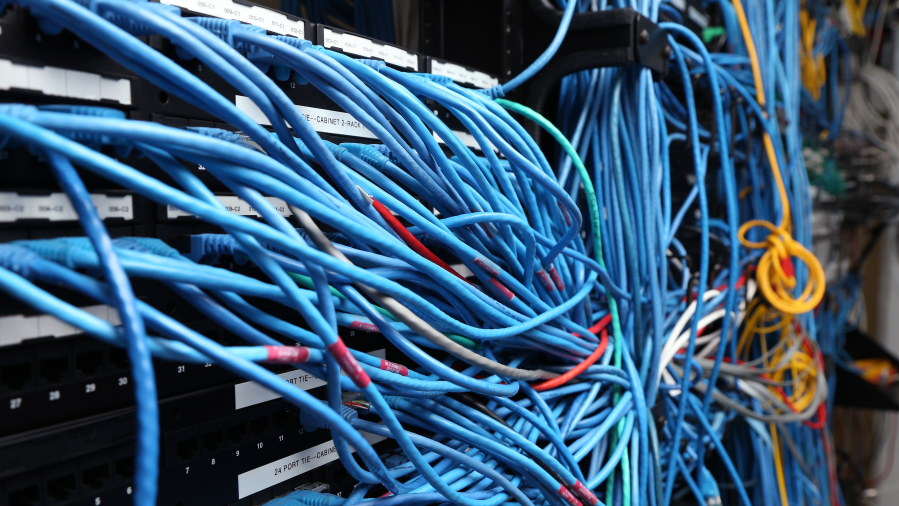States push forward with broadband projects

The $1.2 trillion infrastructure law President Joe Biden signed in November included $65 billion to get high-speed internet to more people. Much of that funding is expected to be channeled into rural and low-income communities.
Now, exactly how all those billions will be distributed is still being worked out.
In the meantime, many states aren’t waiting. They are boosting broadband access using another pot of cash, tapping into pandemic relief funds from the American Rescue Plan Act or ARPA — a law that included about $360 billion for broadband investments and support.
Anna Read is senior officer with the Pew Charitable Trusts’ Broadband Access Initiative. The following is an edited transcript of our conversation.
Anna Read: In terms of the funding that states have allocated, the vast majority of it is going toward broadband grant programs, which generally prioritize last-mile service, so that’s service that connects homes and businesses in rural and unserved areas. So, the areas of their state where people don’t have reliable service or reliable access to broadband. And this aligns very much with how states have been investing through their state grant programs over the last several years.
Kimberly Adams: How is that money being targeted specifically? You said rural areas. Any other groups or areas?
Read: We’re also seeing states use some of the money or allocate some of the money to other activities, such as line extension or curb-to-home infrastructure programs to support connections for low- and moderate-income households. So for example, both Virginia and Connecticut have set aside for line extension or curb-to-home buildouts that connect multifamily buildings or residences where the infrastructure maybe is nearby. But there’s not that sort of last connection to the building.
Adams: How big of a deal is this amount of money flowing into these types of investment right now, in the larger scheme of things?
Read: Between the broadband funding available in the Infrastructure Investment and Jobs Act and the funding available through the American Rescue Plan Act, it’s really the most significant investment that we’ve seen in broadband. If you look at state programs over the last few years, they’ve been steadily increasing the amount of funding they were appropriating to their programs. But even some of the best-funded programs — Illinois, for example, had $400 million total — are significantly less than the amounts of funding now available with the American Rescue Plan Act and Infrastructure Investment and Jobs Act funding available to states.
Adams: In many places, even sort of knowing where the need is for broadband infrastructure can be pretty hard to come by. Is any of this money going to help update, say, broadband maps so they can be more strategic with these investments?
Read: With the available funding, states are investing in mapping and creating a better understanding of where some of those gaps in access are and what some of those specific needs are. Connecticut, for example, has set aside some funding. Rhode Island has also set aside funding to create broadband maps. And Tennessee set aside $500 million total of their ARPA allocation for broadband, $400 million for infrastructure, and that’s going to be distributed based on an updated map. So, they’re making that investment in mapping prior to allocating those infrastructure funds or to granting out those infrastructure funds.
Related links: More insight from Kimberly Adams
The infrastructure law that includes that $65 billion in broadband funding I mentioned earlier, it also made permanent a program that gives $30 to $75 discounts on broadband service.
But, as my colleague Savannah Maher reported, millions of eligible families aren’t taking advantage of the program, primarily because they don’t know about it.
We’ll also link to Anna’s report over at the Pew Charitable Trusts about how states are using pandemic relief funds to increase broadband access.
But not all states have the political infrastructure, as it were, to take advantage of the deluge of federal broadband cash.
A story from AL.com explains how in Alabama, the Legislature had to convene a special session to pass a bill allowing the state to spend $772 million in pandemic relief funds to do things like expand high-speed internet access.
Counties said they needed the change to the state constitution, which prohibits them from providing a thing of value to a private enterprise, according to the article. And given that the internet is pretty valuable these days, it created a bit of an issue. There was bipartisan support for the change, which will allocate $277 million for broadband expansion in the state.
The future of this podcast starts with you.
Every day, the “Marketplace Tech” team demystifies the digital economy with stories that explore more than just Big Tech. We’re committed to covering topics that matter to you and the world around us, diving deep into how technology intersects with climate change, inequity, and disinformation.
As part of a nonprofit newsroom, we’re counting on listeners like you to keep this public service paywall-free and available to all.
Support “Marketplace Tech” in any amount today and become a partner in our mission.












